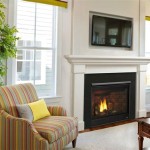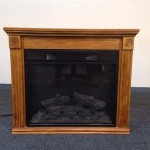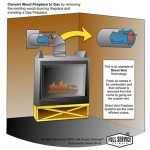Revitalizing Your Hearth: Fireplace Paint Ideas
The fireplace serves as a central focal point in many homes, offering warmth and aesthetic appeal. Over time, however, the fireplace can become outdated or worn, detracting from the overall ambiance of the room. One of the most effective and economical ways to rejuvenate a fireplace is through paint. Selecting the right paint and color can dramatically alter the fireplace's appearance, complementing the existing decor and enhancing the room's character. This article explores various fireplace paint ideas, providing insights into color choices, paint types, and surface preparation techniques for achieving a stunning transformation.
Understanding Paint Types for Fireplaces
The selection of the correct paint type is crucial for ensuring durability and safety, particularly when painting the firebox or surrounding areas exposed to heat. Different materials, such as brick, stone, or wood mantels, require different paint formulations.
For the firebox itself, high-temperature paint is essential. This specialized paint is designed to withstand extreme heat without blistering, peeling, or emitting harmful fumes. High-temperature paint is typically available in spray or brush-on formulations and is commonly used for stoves, grills, and other high-heat applications. It is imperative to follow the manufacturer's instructions meticulously, including any curing processes, to ensure optimal performance and longevity.
When painting brick, masonry paint is the preferred choice. This type of paint is formulated to adhere to porous surfaces and resist moisture, preventing chipping and cracking. Acrylic latex masonry paint is a popular option due to its durability and ease of application. It is also breathable, allowing moisture to escape from the brick, which helps prevent damage caused by freeze-thaw cycles. Priming the brick with a masonry primer before painting is highly recommended to improve adhesion and create a uniform surface.
For wood mantels and surrounds, interior latex paint is generally suitable. This paint type is available in a wide range of colors and finishes, allowing for considerable design flexibility. Before painting, sanding the wood surface to create a smooth base is advisable. A primer should also be applied to seal the wood and improve paint adhesion. Alkyd or oil-based paints can also be used on wood, offering increased durability and a smoother finish compared to latex paints. However, oil-based paints have a longer drying time and require mineral spirits for cleanup.
Exploring Color Palettes for Fireplace Transformation
The color of paint used on a fireplace can significantly impact the room's atmosphere. Careful consideration should be given to the existing color scheme, architectural style, and desired aesthetic.
Neutral colors, such as white, gray, and beige, are timeless choices that can create a clean and sophisticated look. White paint, in particular, can brighten a room and make the fireplace appear larger. Gray tones offer a more contemporary feel and can complement a variety of decor styles. Beige provides a warm and inviting ambiance, blending well with traditional furnishings. These neutral colors can serve as a versatile backdrop for accent pieces and seasonal decorations. Consider different sheens; a matte finish can create a softer, more subtle look, while a semi-gloss finish can add a touch of sheen and make the fireplace easier to clean.
Bold colors, such as black, navy blue, or emerald green, can make a dramatic statement and create a focal point in the room. A black fireplace can add a sophisticated and modern touch, while navy blue offers a more traditional yet stylish look. Emerald green can bring a pop of color and evoke a sense of nature and tranquility. When using bold colors, it's important to consider the size of the room and the amount of natural light available. Darker colors can make a small room feel smaller, so they are best used in larger spaces with ample light. Accent walls or fireplace surrounds are ideal locations to experiment with bolder hues.
For a more rustic or vintage aesthetic, consider using textured paints or faux finishes. These techniques can mimic the look of aged brick, stone, or wood, adding character and depth to the fireplace. Faux finishes can be achieved using various painting techniques, such as dry brushing, sponging, or rag rolling. These methods involve applying multiple layers of paint to create a textured effect. Chalk paint is another popular choice for achieving a distressed or antique look. Chalk paint adheres well to most surfaces and can be easily sanded to create a worn appearance.
Preparation Is Key: Achieving a Professional Finish
Proper preparation is essential for ensuring a smooth and long-lasting paint job. Neglecting this step can lead to peeling, chipping, and an overall unsatisfactory result.
The first step is to thoroughly clean the fireplace surface. Remove any loose debris, dirt, or soot using a brush, vacuum cleaner, or damp cloth. For brick or stone fireplaces, a wire brush can be used to scrub away stubborn grime. If mildew or mold is present, clean the surface with a solution of bleach and water, following safety precautions. Rinse thoroughly and allow the surface to dry completely before proceeding.
Next, repair any cracks or damages in the fireplace surface. Use a masonry patch or filler to fill in cracks in brick or stone. For wood mantels, use wood filler to repair any holes or imperfections. Allow the filler to dry completely, then sand it smooth to blend seamlessly with the surrounding surface. Repairing these imperfections will create a smooth and even base for the paint.
Priming the fireplace surface is a crucial step that should not be overlooked. Primer helps to seal the surface, improve paint adhesion, and prevent stains from bleeding through. Use a primer specifically designed for the material being painted, such as masonry primer for brick or wood primer for wood mantels. Apply the primer in thin, even coats, following the manufacturer's instructions. Allow the primer to dry completely before applying the paint.
Finally, protect the surrounding areas by using painter's tape and drop cloths. Tape off any trim, walls, or floors that you don't want to be painted. Cover the floor with drop cloths to protect it from spills and splatters. Taking these precautions will save time and effort in cleaning up after the paint job is complete.

Pin On Home Sweet

30 Gorgeous Painted Brick Fireplace Ideas

7 Beautiful Ideas For Painting Interior Brick Fireplaces

13 Inspiring Colours To Paint Your Brick Fireplace

The Top Color Ideas For Painting A Brick Fireplace 700 N Cottage

Pin On House

Gorgeous Diy Fireplace Makeover 3 Reasons To Paint Your Black Lehman Lane
:max_bytes(150000):strip_icc()/240418215_223011313156878_1591751283081249783_n-47301b0243084bee9e6c538e6ea6026a.jpg?strip=all)
30 Gorgeous Painted Fireplace Ideas

Fireplace Paint Ideas Dulux Projects

12 Beautiful Diy Fireplace Ideas Bob Vila
Related Posts








